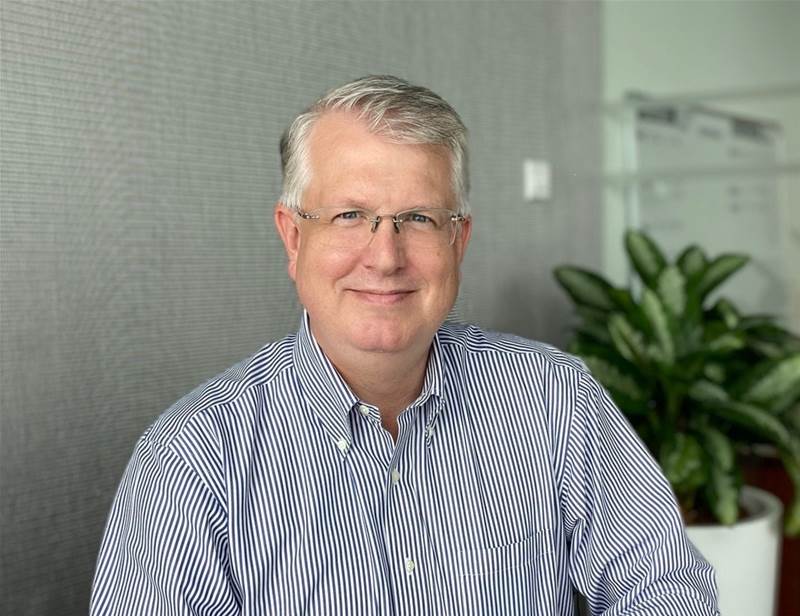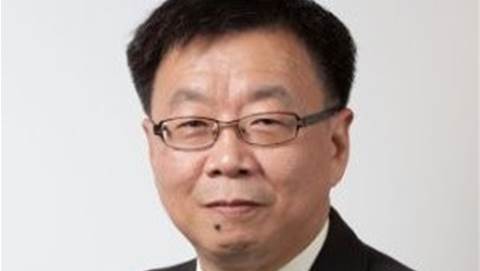The Asia Pacific data centre industry is in a sweet spot, riding the wave of digitisation, data explosion and cloud adoption from cloud providers, mobile and media content, streaming and e-commerce.
How is Digital Realty embracing these growth opportunities?
In an exclusive interview with iTNews Asia, Mark Smith, Managing Director - Asia Pacific at Digital Realty, talks about the strategy and thinking behind the company’s expansion, the transformation of the organisation and how he is bringing Digital Realty up the leaderboard.
iTNews Asia: How do you see the data centre Asia Pacific landscape and how are you growing the business?
More than 60% of the world's population are in Asia and the number of internet users are growing each year.
The region is already the largest data centre region in the world and one of the fastest growing. Structured Research forecasts that the region will grow at a 13.7% CAGR over the next five years.
Asia only has half the amount of data centre capacity built compared to US. We're still in the beginning of a growth cycle here as many countries are significantly less developed in terms of digital infrastructure and we’re seeing historic investments being made.
For Digital Realty, we see a real opportunity to bring more energy, focus and investment into the region. We’re launching six data centres across five countries, bringing a total IT load of about 150 megawatts, which more than doubles the capacity and megawatts under our management.
In fact, we announced our Q1 earnings a few weeks ago and Asia Pacific hit a record. It was our best-ever quarter and our best-ever leasing quarter.
iTNews Asia: What were the growth drivers for you in the last 12 to 18 months?
Pre-COVID, the underlying drivers were digitalisation. Enterprises were changing how they were consuming technology and looking to outsource their data centre needs to third-party multi-tenant data centres.
The pandemic has accelerated this change and reinforced our digital lives. The whole technology stack is now proven. Data centres are now an essential service in society.
Our customers – from enterprises to cloud service providers – see the region as an enormous growth opportunity for their businesses.
iTNews Asia: Companies undergoing digital transformation tell us they are going to the cloud or going hybrid and accelerating everything that they plan three years ahead of time. How is Digital Realty embracing these opportunities?
When I joined in late 2018, we set a goal to become the recognised leading data centre provider across Asia Pacific.
There are three ways that we’re doing that: One, we will continue to invest in our existing markets and add data centre capacity. Two, we are now actively moving into new markets in the region. Three, we are rolling out our enterprise retail colocation offering called PlatformDIGITAL, which is something that we've already done in the United States and in Europe, into the Asia Pacific.
We’re uniquely positioned as the only data centre provider across Asia Pacific, providing everything from the enterprise, single rack, highly connected solution, all the way through to multi-megawatt cloud service provider solution, and everything in between.
iTNews Asia: Tell us more about PlatformDIGITAL. How are you expanding your offerings and what have been the biggest benefit of the platform to customers?
In the last quarter, we brought in about 100 new customers to our platform in Asia. We launched our platform early last year in Osaka and in April this year in Singapore. There’s more to come – in September we will launch in Hong Kong and in November, Tokyo. Early next year we will add Seoul.
In terms of customer benefits, the platform will ensure the same service level agreements and quality of service. If you're a customer of ours – anywhere in the world – you will get the same contract and services in Asia.
While space and power is one aspect, we will also offer the connectivity solutions that enterprises need to connect with their counterparts. There are global organisations that don't necessarily have the resources, or technical resources on the ground in these markets, and that's something that we're able to supplement and support them on.
iTNews Asia: Has the pandemic redefined your approach to the market? How were you able to track and anticipate what’s coming?
The underlying trends that we talked about accelerating during COVID remains. What’s new is we adding some new technologies that are coming, for example IoT. There will be billions of devices that needs to be connected by 2030. All these data needs to be transmitted, stored and analysed.
The second and broader trend is 5G. I don't think 5G is fully hitting us today in terms of volumes. The real impact is over the next few years when we move from 4G to 5G. That’s going to increase the bandwidth by 100 times – there’s going to be tremendous growth in volume with new applications and services.
Lastly, analysing that data around machine learning, AI, predictive analytics etc, the amount of compute power will grow exponentially.
We’ve come up with something we called a Data Gravity Index DGx as a measurement, where we look at the data creation and storage and measure how that is growing. We look at the analytics around the data and the data that is transmitted by the metro. We then look at the growth and use an algorithm to see if we’re seeing an explosion, which is then measured in terms of how it is compounded annually.
iTNews Asia: You recently opened a new SIN12 data centre, your third, in Singapore, with state-of-art features such as evaporative cooling systems and new green standards for power and energy use. How significant is this facility and is that the blueprint for your data centres in the future?
Singapore is certainly our most efficient data centre in Asia Pacific. We’re encouraged by the engagement that we've had with the government around building a sustainable data industry in Singapore. It’s not only about making our data centres more efficient in how they manage energy, but also about driving more renewables into the grid and accessing them.
We want to ensure that we're growing in a sustainable fashion. Taking active control is one area which we are driving greater efficiencies in the data centre. SG12 is 1.25, which is one of the lowest multi-tenanted data centre PUE in the region.
iTNews Asia: In Asia, sustainability targets can be complex to navigate. You need to work with regulators, utilities and different parts of the ecosystem. How challenging is that for you?
Some markets are further ahead in maturity and some have not yet made sustainability and renewables a priority. But as an industry trend, there's no question about where it is headed. This is becoming table stakes and an absolute priority for our customers.
Where we can control our destiny is how efficiently and effectively we build our own data centres.
AI and the massive amount of compute that's being created is driving an increase in power densities. This creates opportunities for us to create even greater efficiencies with those higher densities.
In Singapore, we’re testing liquid cooling technology as an example. We've done a pilot with a local company called CoolestDC, part of National University of Singapore, who are using servers that are machine learning or AI related to lower their power densities.

Digital Realty is piloting an initiative with CoolestDC to use AI to predict and automatically adjust servers to meet cooling requirements based on compute load and weather
iTNews Asia: Is it easier to be sustainable and yet to grow the business at the same time?
We're in a great place to be able to move the needle on sustainability because we're a large power consumer. Globally we’ve already contracted for 560 megawatts of renewable power, both solar and wind, which is not small. On the financing side, we've issued $ 5.6 billion worth of green bonds that will help fund or initiatives in sustainability and renewables.
We’re the first data centre company of our size to sign up for the global Science-Based Target Initiative (SBTI), which promotes best practices in emissions reductions and sets net-zero targets in climate goals by the private sector and governments. Singapore is also part of SBTI.
iTNews Asia: Globally we see a trend of data centre providers integrating on premises, colocation, edge and bringing delivery everything together. I see Digital Realty moving a lot in the colocation and interconnected space. Could you share any examples of how you are evolving this mix?
We’ve a strategy for most of the large metros in Asia Pacific. We see an opportunity to virtually change the typography of the Internet. If you look at Tokyo as an example, all the internet traffic is going downtown through a couple of carriers. There's a lot of data centre growth east of Tokyo.
We've tied in with subsea cable and telco providers. Those subsea cable providers are also going to put a SLT at point of presence in our data centre, and 60% of that can then bounce to the rest of Asia without going downtown. The costs are lower and there will be a lot more inventory available. It’s also where the hub providers are building their clouds and the location is closer to the major cloud providers.
We see the centre of gravity shifting from downtown Tokyo to East Tokyo.
iTNews Asia: How do you see Digital Realty being positioned in the industry? How are you continuing to evolve?
Historically, our pedigree is real estate and we’re listed as a real estate investment trust in the New York Stock Exchange.
We started as a real estate company, but our future is technology. This idea of network interconnect and connectivity is a very important part of our technology story.
There are certain attributes of Digital Realty that our shareholders appreciate, for example in long term leases and sustainable cash flows, but we're increasingly becoming a technology company.
- Mark Smith, Managing Director - Asia Pacific at Digital Realty
iTNews Asia: Could you project where Digital Realty will be in your business expansion? How significant a role you will play in the Asia Pacific?
We had a record quarter last quarter and our leasing was nearly as much as the entire US market. And we're a smaller business in comparison.
On expansion, it will take time to organically build our data centres. This year we're launching six new data centres across five countries and more than doubling the megawatts that we have. We're going to continue expanding aggressively in markets that we're already in.
In the next quarter, we're going to be announcing two new markets and expect to enter four or more new geographies within the next few years. We'll continue to roll out our enterprise PlatformDIGITAL offering in all the metros that we're in.
Our continued focus on connectivity is going to be important. There is an index connectivity index from policy to leaderboard that we look at. In Europe, we're number one out of 10. In the US, we're number two. Currently, in Asia, we're number 10. I fully expect us to significantly go up that leaderboard.
iTNews Asia: Globally, you're moving to Equinix’ space and Equinix is moving into your space. Is Equinix a competitor you benchmark against in your expansion?
Equinix has been very successful in Asia Pacific and it's quite a tribute to what they've done. But we don't think about Equinix very much in our expansion. We’re focused on the market and how we can change them in order to bring more value to our customers. We do want to be an agent of change in these markets and that's certainly something we're looking to drive towards.
iTNews Asia: How different would the data centre industry be in three years?
I think the current trends, around the explosion of data, data gravity, increased density within the data centre. will continue over the next three years. There will also continue be a need for greater sustainability and options for renewables.
Data Centres will remain essential connectivity solutions for our customers and businesses.










